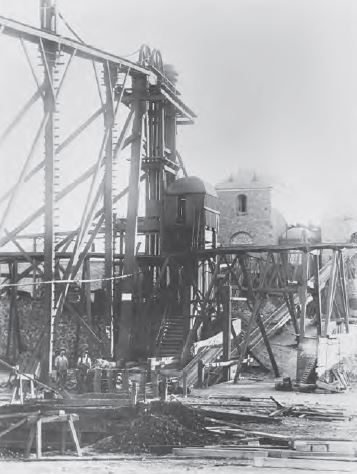Australian Cornish Mining Sites: Moonta
Hancock’s Drive for Mechanisation
Mine Captain: Henry Richard Hancock (1836-1919)
In 1864, Henry Richard Hancock become Mine Captain and proved most influential. He retained the position until his retirement in 1898.
Hancock was an "enthusiast for machinery" and he recognised the benefits of mechanisation, and in turn profitability. He replaced hand and horse-worked pumps, winches and ore-crushers with steam-power.
By 1865, barrow work was replaced by tramways and by 1866, wagon teams, which carried ore to the Wallaroo Smelters, were replaced by a railway. The mine's engineering shops were the best in the colony and enabled Hancock to experiment in replacing the slow and arduous labour of drilling holes by sledge hammer in the hard Moonta rock. He designed and patented a percussion drill driven by compressed air [c.1870-90] and capable of boring forty feet of shot-holes in an eight-hour shift. For separating sulphides from the ores he made and patented a jigger [the Hancock Jig was developed in the 1860s and patented in 1870 and was also used later at Broken Hill.
Hancock was responsible for the development of ore treatment methods at Moonta, introducing the famous Hancock mechanical jig and improved buddles, which were erected at three treatment plants, Hancocks and Richmans, powered by beam engines, and Ryans, powered by a horizontal engine. Hancock also introduced wire rope and skips in place of chain and kibbles.
It in turn became known as the 'Hancock Jig' which gained international mining recognition and was used extensively in Australia and was widely adopted in America. The jig had an increased capacity compared with previous machines and could increase the rate of ore processing.
Hancock, a devout Wesleyan, also worked to establish minimum wages for miners, established a brass band, library and reading room and compulsory night school for boys from the mine's sorting tables. He also encouraged cricket, football, chess and glee clubs and many mutual improvement societies. This 'tinkering' with machines and the introduction of benevolent activity is reflective of a 'Cornish' approach.

